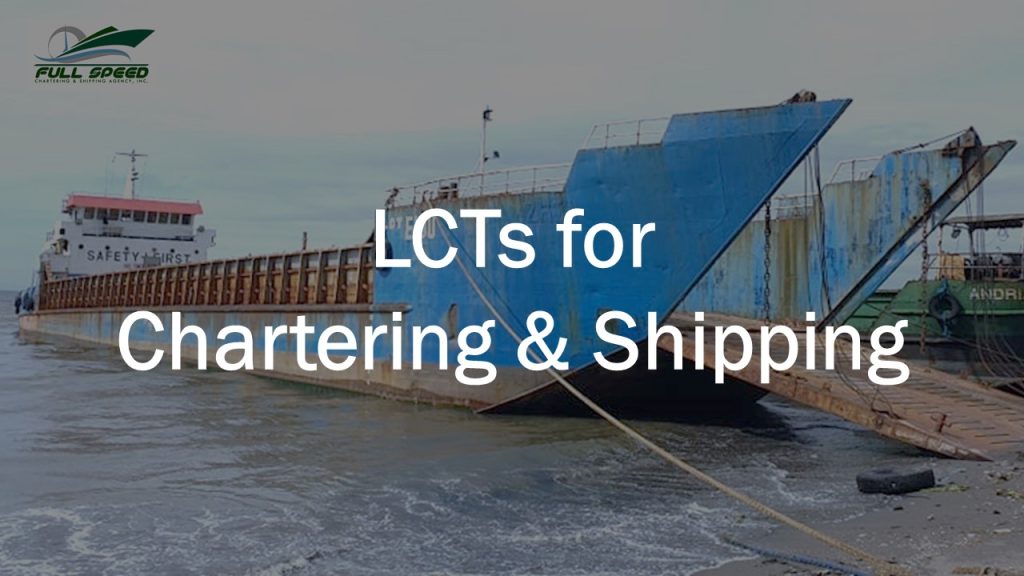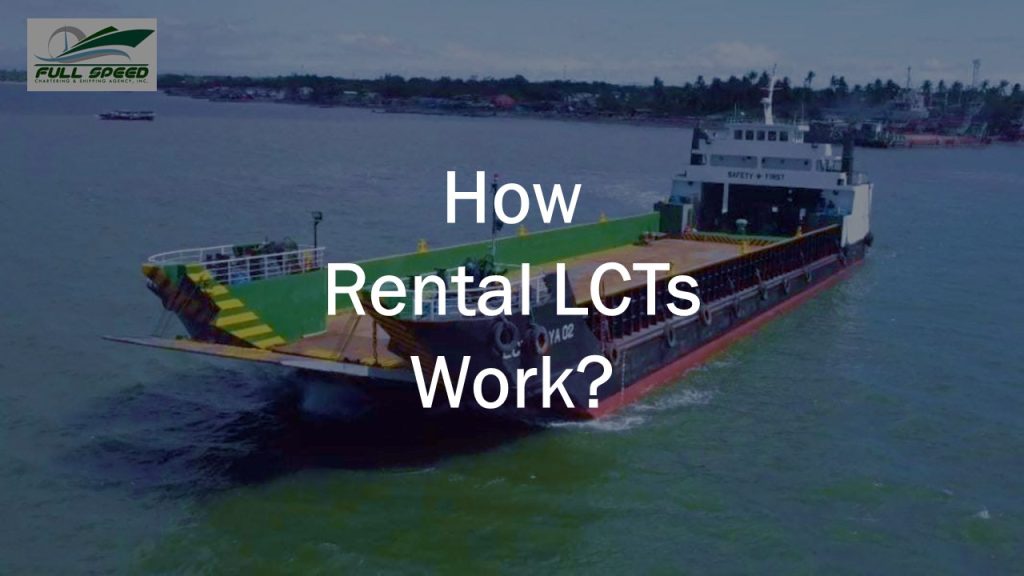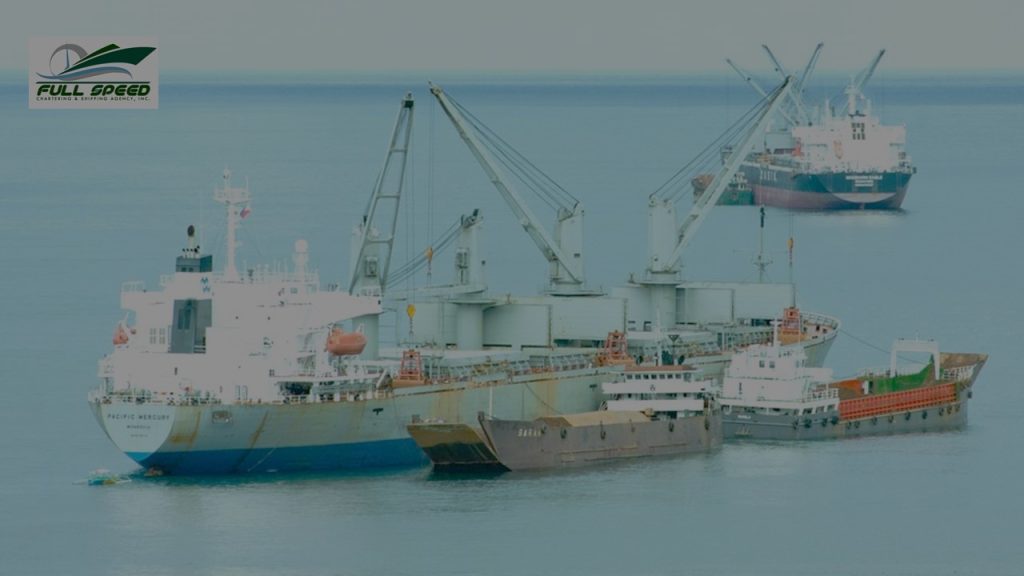Picture this: a massive floating fortress gliding through azure waters, carrying with it not just concrete blocks and steel beams but also dreams of progress for an entire nation. In the Philippines’ ever-expanding construction landscape, where skyscrapers reach for the heavens and infrastructure development knows no bounds, one unconventional hero has emerged – the barge boat. This technological masterpiece combines brute strength with unparalleled agility to transport everything from heavy machinery to prefabricated sections of buildings across vast distances without breaking a sweat. Strap on your life jacket and prepare for an exhilarating voyage into the world of barge boats, where size meets ingenuity in perfect harmony.
Click here to view our well-maintained barge boats and LCTs in the Philippines.
Click here to view our deck barge fleet as an alternative to barge boats.
Overview of the Barge Boats (or LCTs): The Concept
Barge boats in the Philippines, also known as LCTs, are becoming an increasingly popular concept in the construction industry. These versatile vessels have opened up a new realm of possibilities when transporting heavy equipment and materials to remote construction sites, as well as providing a stable and secure platform for various types of construction work. Unlike traditional transportation methods, such as trucks or barges, barge boats offer unique advantages that make them ideal for navigating tight waterways and accessing hard-to-reach areas.
One key feature of barge boats is their ability to carry heavy loads over long distances, thanks to their robust design and spacious cargo holds. This makes them highly efficient in transporting construction materials, such as cement, steel pipes, or machinery, which would otherwise require multiple trips by land or sea. Additionally, barge boats can access shallow waters with ease due to their flat-bottomed hulls. This enables them to navigate through narrow canals and reach areas unreachable by larger vessels, making them particularly useful for projects located in remote regions or island communities. Moreover, the stability provided by these floating platforms allows construction crews to safely perform tasks like pile driving or dredging—activities that would typically require expensive and time-consuming infrastructure setup on land.
The concept of barge boats offers a game-changing solution for the challenges faced by the Philippines’ construction industry. Their versatility in carrying heavy loads over long distances while being able to navigate shallow waters opens up new frontiers for conducting cost-effective and efficient construction work. With their ability to transport building materials and equipment directly to the construction site, barge boats eliminate the need for lengthy transportation processes and reduce the risk of damage or delays. This not only saves time but also minimizes expenses associated with land-based infrastructure and logistics.
Moreover, barge boats can be easily modified and customized according to specific project requirements. Different barges can be designed to accommodate various construction activities such as concrete pouring, welding, or installation of heavy machinery. This flexibility allows construction companies to adapt quickly to changing project needs and complete tasks efficiently.
Additionally, barge boats offer significant environmental benefits. As they navigate through waterways, they produce less pollution than trucks or trains that rely on fossil fuels. Barge transportation helps reduce greenhouse gas emissions, making it a more sustainable option for construction projects.
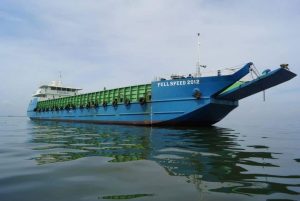
Barge Boats to Transport Heavy Equipment During Construction Projects
In the construction world, transporting heavy equipment from one location to another can be a logistical nightmare, especially in the Philippines. The roads are often congested, making it difficult and time-consuming to move large machinery. However, an innovative solution has emerged in the form of barge boats. These waterborne vessels offer a unique method of transportation that is not only efficient but also cost-effective.
One key advantage of using barge boats (also known as LCTs) for transport during construction projects is their ability to reach remote areas inaccessible by land. This opens up new opportunities for development in previously untapped regions, helping to stimulate economic growth and provide infrastructure where it is most needed. Additionally, barge boats offer a reduced environmental impact compared to traditional road transport, as they emit fewer greenhouse gas emissions and cause less wear and tear on existing infrastructure.
Moreover, using barge boats is advantageous when working near bodies of water such as rivers or lakes. It eliminates the need for extensive ground preparation, such as building temporary access roads or bridges. By utilizing the natural resources available through waterways, construction companies can minimize disruption to local ecosystems while ensuring materials are transported efficiently within project timelines.
Incorporating barge boats into construction projects brings numerous benefits beyond simple transportation logistics. Their versatility makes them an invaluable assets in today’s ever-evolving industry and highlights the importance of embracing innovative solutions when tackling complex challenges.

Barge Boats to Transport Construction Materials in the Philippines
When transporting construction materials in the Philippines, barge boats offer a unique and efficient solution. The archipelagic nature of the country presents challenges for traditional transportation methods, but barge boats, also known as LCTs, provide a cost-effective and environmentally friendly alternative. These versatile vessels can navigate rivers, shallow coastal waters, and even open seas, allowing construction companies to easily transport heavy equipment, raw materials, and finished products to remote areas with limited infrastructure.
One advantage of using barge boats is their ability to carry large quantities of construction materials simultaneously. With their spacious decks and sturdy structures, these vessels can accommodate oversized loads that would be difficult or impossible for trucks or smaller boats to transport. Additionally, barge boats can reduce transportation costs by taking advantage of waterways instead of relying solely on road networks. This not only saves fuel expenses but also helps alleviate traffic congestion on major highways.
Furthermore, utilizing barge boats in construction projects promotes sustainability in the industry. By choosing water as a mode of transportation over land-based options like trucks or trains, builders can significantly reduce carbon emissions associated with conventional logistics operations. Additionally, compared to building new roads or bridges for truck access to remote locations, using barges minimizes the environmental impact caused by infrastructure development.
Integrating barge boats into construction projects in the Philippines offers numerous benefits – from cost-effectiveness and efficiency to environmental sustainability. With their capacity to carry heavy loads across various types of water bodies and flexibility in navigating challenging terrains within an archipelago context, barges are an ideal solution for transporting construction materials and equipment.

Features and Capabilities of Barge Boats in the Philippines
The use of barge boats (also known as LCTs) in construction projects in the Philippines has been on the rise, and for good reason. These specially designed vessels offer unique features and capabilities that make them indispensable for transporting heavy equipment, materials, and personnel to remote locations where traditional means of transportation are not feasible. One key feature of barge boats is their flat deck, which allows for easy loading and unloading of construction materials such as steel beams, concrete barriers, and heavy machinery.
In addition to their load capacity, barge boats also have excellent stability characteristics that enable them to handle large payloads without compromising safety. This makes them ideal for carrying bulky items across rivers or shallow waters where other vessels might struggle. Moreover, these boats can be equipped with powerful cranes or hydraulic arms that allow for efficient and precise lifting operations, eliminating additional equipment at the construction site.
Another notable capability of barge boats is their versatility in adapting to different project requirements. They can be customized with ramps, auxiliary propulsion systems, or even modular sections to accommodate specific needs. This flexibility makes it possible to transport not only raw materials but also prefabricated components like precast concrete panels or steel structures directly from manufacturing sites to construction areas—an efficient approach that minimizes handling costs while speeding up project completion.
Whether it’s delivering building supplies across rough terrain or navigating through narrow waterways inaccessible by roadways, barge boats prove invaluable in meeting the demands of construction projects in the Philippines. These workhorses of the sea are capable of carrying heavy loads and maneuvering through challenging environments, making them a preferred choice for transporting construction materials.

Benefits of Using Barge Boats in Philippines’ Construction Projects
Barge boats (also known as LCTs) have become increasingly popular in the Philippines for construction projects due to their numerous benefits. One of the major advantages is their ability to transport heavy equipment and materials across bodies of water, which can be a significant challenge in an archipelago like the Philippines. Barge boats provide a cost-effective solution for transporting construction supplies, reducing the need for expensive land transportation or helicopters.
Additionally, barge boats offer flexibility by reaching remote or coastal areas that might otherwise be difficult to access by road. This is particularly advantageous when constructing infrastructure projects such as bridges, where bringing materials from distant locations can be a logistical nightmare. By utilizing barge boats in construction projects, companies can save time and money while ensuring efficient transport of materials.
Moreover, using barge boats in the Philippines promotes sustainability and minimizes environmental impact. Compared to traditional transportation methods like trucks or barges pulled by tugs, barge boats emit significantly fewer greenhouse gas emissions per unit transported. With growing concerns about climate change and environmental degradation, using barge boats aligns with responsible construction practices and contributes towards reducing carbon footprints.
Utilizing barge boats in construction projects offers several notable advantages: cost-effectiveness, flexibility in accessing remote areas, and promoting sustainable practices. As development continues throughout the Philippines’ archipelago, incorporating these innovative solutions will undoubtedly aid in accelerating progress while minimizing environmental impact—a win-win situation for both developers and the environment.
Types of Barge Boats Suitable for Construction Projects in the Philippines
Regarding construction projects in the Philippines, barge boats are crucial in transporting heavy materials and equipment to remote areas. These floating platforms are designed for transportation and can be customized to suit various project requirements. Here are some types of barge boats commonly used in the Philippines:
1. Flat Top Barge Boats:
These versatile barges have a flat deck with no superstructure, allowing for easy loading and unloading of goods. They are ideal for transporting bulk materials like sand, gravel, and cement to construction sites near water bodies. With their large cargo capacities and stability on the water, flat-top barges ensure efficient material delivery.
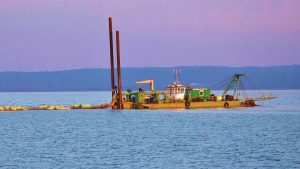
2. Crane Barge Boats:
As the name suggests, crane barges come equipped with cranes that can lift heavy loads onto the deck or directly into the water. These specialized barge boats are essential for construction projects that involve deep excavation or heavy machinery installation. With their lifting capabilities, crane barges eliminate the need for additional cranes on-site and provide a cost-effective solution.
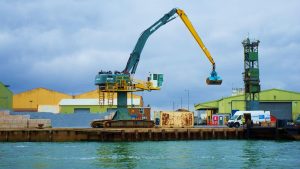
3. Dredging Barge Boats:
Dredging barges are specifically designed for the purpose of dredging, which involves removing sediment or debris from the bottom of water bodies. These barges come equipped with powerful pumps and suction systems that can extract large amounts of material efficiently. Dredging barges play a crucial role in maintaining navigable waterways, deepening ports, and reclaiming land from the sea.

4. Accommodation Barge Boats:
Construction projects often require temporary accommodation for workers near the worksite. Accommodation barges are floating structures that provide living quarters, dining facilities, and other amenities for workers on-site. These barges are equipped with comfortable cabins, communal areas, kitchens, and recreational spaces to ensure the well-being and productivity of the construction crew. Accommodation barges can be a cost-effective solution compared to setting up temporary housing on land or renting accommodations in nearby towns.
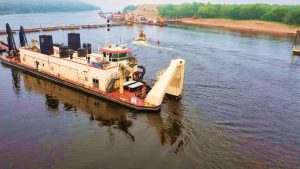
5. Jack-up Barge Boats:
Jack-up barges are specialized vessels used for various offshore construction activities. They are equipped with extendable legs or jacks that can be lowered to the seabed, allowing the barge to be raised above water level. This feature enables jack-up barges to work in shallow waters and provides a stable platform for construction operations such as pile driving, drilling, and installing offshore structures.
Choosing the right type of barge boat depends on factors such as project requirements, location accessibility, cargo size, and budget constraints. Each type offers unique advantages that contribute to smooth project operations while minimizing logistical challenges associated with construction projects in remote areas of the Philippines.
By understanding the different types of barge boats suitable for construction projects in the Philippines, project managers can make informed decisions when selecting transportation options that best fit their needs. Whether it is a small-scale construction project in a secluded island of South Cotabato or a large-scale infrastructure development in challenging terrain in Cebu, there is a barge boat available to cater to every requirement.
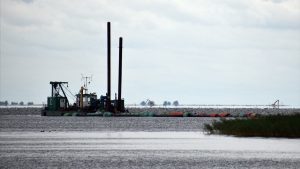
How Barge Boats Improve Efficiency and Cost-effectiveness in Philippine Construction
Barge boats (also known as LCTs) have emerged as a game-changer in the construction industry of the Philippines, offering numerous benefits that improve efficiency and cost-effectiveness. One of the key advantages is their ability to transport heavy equipment and construction materials directly to remote areas along rivers and coastlines, where conventional transportation methods are often challenging or prohibitively expensive. This eliminates the need for costly land-based logistics and drastically reduces transportation time, allowing construction projects to be completed more quickly.
Moreover, barge boats provide an efficient alternative mode of transportation for offshore construction projects. They can transport large modules, machinery, and entire prefabricated structures directly to the project site without requiring extensive assembly or disassembly processes. This not only saves time but also minimizes potential damage or loss during transportation. Additionally, barge boats offer greater flexibility in terms of scheduling since they are not bound by road traffic or weather conditions like traditional transportation methods.
Incorporating barge boats into Philippine construction projects brings a new era of efficiency and cost-effectiveness by significantly reducing logistical challenges and streamlining project timelines. With their ability to access remote locations and transport heavy equipment with ease, these versatile vessels revolutionize how construction materials are delivered while minimizing delays caused by geographical barriers. As the industry continues to adopt these innovative solutions, we can expect increased productivity in Philippine construction projects while optimizing resource allocation on both small- and large-scale ventures.
Are You Looking for Barge Boats for Your Construction Projects in the Philippines?
Full Speed Chartering and Shipping Agency, Inc. (FSCSAI) is a trusted provider of barge boats for construction projects in the Philippines. With their extensive fleet and experienced crew, they specialize in transporting heavy cargo, machinery, and construction materials to remote areas with limited access.
- Email us: info@fullspeedchartering.com
- Mobile, Viber, WhatsApp: +63 939 3753224
- Facebook Messenger: Click here
- Click here to inquire
One of the unique advantages of using barge boats (also known as LCTs) for construction projects in the Philippines is their ability to reach areas that are not accessible by land or traditional water transport methods. These versatile vessels can navigate through shallow waters, narrow channels, and even coastal regions where other types of transportation are restricted. This makes them ideal for delivering materials to remote islands or construction sites along rivers and other bodies of water.
Moreover, barge boats offer cost-effective solutions for transporting large quantities of goods or equipment compared to air transport or road haulage. They have the capacity to carry significant loads without compromising on safety or efficiency. This means that contractors can save on transportation costs while ensuring the timely delivery of supplies needed for their construction projects.
If you’re looking for reliable barge boats for your construction projects in the Philippines, Full Speed Chartering and Shipping Agency, Inc. (FSCSAI) should be your go-to choice. Their professional team will ensure efficient delivery to even the most challenging locations while providing cost-effective solutions.
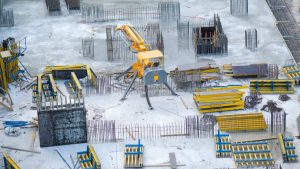
Success Stories of Using Barge Boats in Philippine Construction
Barge boats in Philippine construction projects have proven to be a game-changer, revolutionizing the way large-scale infrastructure development is carried out in the country. One remarkable success story is the construction of the Cebu-Cordova Link Expressway (CCLEX), where barge boats were crucial in ensuring efficient and timely project completion. Using these waterborne transportation solutions, construction materials such as aggregates, precast girders, and steel reinforcements were easily transported from mainland Cebu to Cordova without facing the usual challenges of road congestion and traffic delays.
Another significant success can be seen in the Integrated Resort Complex project in Roxas Boulevard, Paranaque City, which heavily relied on barge boats for construction. With limited space and numerous logistical challenges, using barge boats allowed for efficient delivery of construction materials while minimizing disruption to surrounding areas. This innovative approach not only sped up project timelines but also significantly reduced costs by eliminating unnecessary trucking expenses.
Barge boats have undoubtedly transformed the landscape of Philippine construction projects. By leveraging their efficiency and adaptability, these floating workhorses have demonstrated their ability to overcome logistical hurdles and accelerate progress. As more success stories continue to unfold, it’s clear that incorporating barge boats into future infrastructural developments will play an increasingly vital role in shaping the country’s construction industry for years to come.
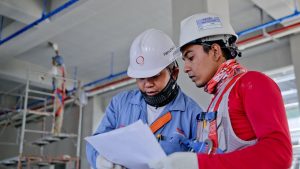
Challenges and Considerations for Using Barge Boats in the Philippines
One of the major challenges in using barge boats (also known as LCTs) for construction projects in the Philippines is the unpredictable weather conditions. The country’s location in the Pacific Ring of Fire exposes it to typhoons and tropical storms, which can cause safety concerns and delays for barge operations. Construction projects often have tight deadlines, making it crucial to plan barge transportation during favorable weather windows carefully.
Another key consideration is the accessibility of remote project sites. The archipelagic nature of the Philippines means that many construction sites are located in remote areas or islands with limited infrastructure. This poses logistical challenges for transporting heavy construction materials and equipment via barge boats, as there may be constraints on access to suitable docking facilities or shallow waters that require careful navigation.
In addition to weather and accessibility challenges, another factor to consider is environmental sustainability. Barging activities can potentially impact coastal ecosystems due to dredging activities, noise pollution, and disturbance of marine life. Employing environmentally friendly practices during barge operations, such as minimizing waste generation and implementing proper waste management systems, will contribute positively towards sustainable development goals set by both national and international bodies.
Addressing these challenges requires thorough planning and coordination between stakeholders in construction projects utilizing barge boats. From considering weather patterns when scheduling transportation to finding innovative solutions for accessing remote project sites while minimizing environmental impacts, a strategic approach will play a vital role in ensuring the successful implementation of such projects in the Philippines’ unique maritime environment.
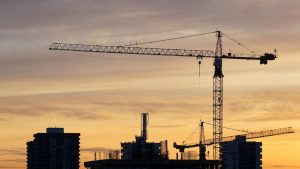
The Need for Efficient Transportation in Construction Projects
Barge boats (also known as LCTs) are emerging as a game-changer in the construction industry in the Philippines, addressing the need for efficient transportation of heavy materials to remote locations. In a country with thousands of islands and limited road infrastructure, traditional transportation methods often prove inadequate for construction projects. Barge boats offer a flexible and cost-effective alternative, enabling materials to be transported directly from the source to the project site without requiring multiple transfers or extensive road networks.
Using barge boats not only reduces transportation costs but also minimizes environmental impact by reducing carbon emissions associated with transporting materials via trucks. This is especially important in areas where roads are scarce or inaccessible due to rough terrain. Barge boats can navigate through rivers, lakes, and coastal waters, allowing construction companies to reach even the most remote corners of the archipelago.
Furthermore, barge boats allow local communities to participate in construction projects by creating job opportunities as boat operators or crew members. This promotes economic growth at the grassroots level and empowers local communities to become active stakeholders in development initiatives.
Barge boats present a compelling solution to address transportation challenges faced by construction projects across the Philippines. Their flexibility, cost-effectiveness, environmental sustainability, and potential for community empowerment make them an ideal choice for efficiently delivering materials to even the most remote sites. By embracing this innovative approach, both large-scale construction firms and smaller community-driven initiatives can ensure the timely completion of their projects while making positive contributions towards sustainable development in the Philippines.
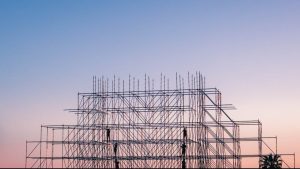
The Future of Barge Boats in the Philippine Construction Industry
Barge boats (also known as LCTs) have been a staple in the construction industry for decades, and their importance is set to skyrocket in the future. With the Philippine government’s ambitious infrastructure projects on the horizon, including bridges, ports, and roads, barge boats will play a pivotal role in transporting heavy materials and equipment to remote construction sites.
One of the key advantages of using barge boats is their ability to navigate shallow waters and reach areas that would otherwise be inaccessible by road or even traditional boats. This opens up opportunities for construction companies to take on projects in locations that were previously considered challenging or impossible. Moreover, barge boats offer a cost-effective transportation solution since they can carry larger loads than trucks or smaller vessels.
In addition to their versatility and efficiency, barge boats contribute positively to environmental sustainability—a growing concern in today’s world. By transporting materials via waterways instead of congested land routes, barge boats help reduce carbon emissions and congestion on highways. As urban areas become more crowded with construction activities, incorporating barge boats into project logistics can alleviate traffic-related issues while minimizing negative impacts on air quality.
As the demand for infrastructure development continues to rise in Manila, Cebu, Palawan, Zambales, Mindoro, Cagayan de Oro, Leyte, Pampanga, Cavite, and Batangas, barge boat usage in the construction industry will be essential for its success. Their ability to reach remote locations efficiently while reducing environmental impact makes them an invaluable asset for both large-scale public projects and private enterprises alike.
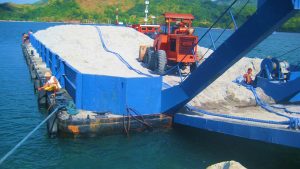
Takeaway: 5 Barge Boats (LCTs) for Philippines’ Construction Projects
In conclusion, barge boats or LCTs are poised to revolutionize the construction industry in the Philippines. With their versatility and efficiency, these floating platforms offer a compelling solution to the country’s infrastructure challenges. By leveraging their ability to transport construction materials directly to remote island provinces, barge boats eliminate the need for extensive logistical operations, reducing costs and timeframes significantly.
Furthermore, barge boats can also serve as temporary housing for construction workers, alleviating the strain on local communities while projects are underway. This innovative approach not only improves living conditions for workers but also fosters a sense of camaraderie and teamwork in isolated areas that may have otherwise struggled with limited resources.
Moreover, embracing barge boats opens up opportunities for collaboration between local government agencies and private enterprises. As both parties seek sustainable solutions for infrastructure development across the archipelago, integrating barge boats into their plans can provide mutual benefits by cutting transportation costs and enhancing project timelines.
In summary, adopting barge boats in the Philippines offers an economical and practical approach to overcoming geographical barriers. Utilizing these vessels not only streamlines construction processes but also brings positive social and economic impacts to local communities. Going forward, it is crucial for stakeholders from all sectors to recognize and harness this tremendous potential to pave a brighter future for Philippine infrastructure development.

